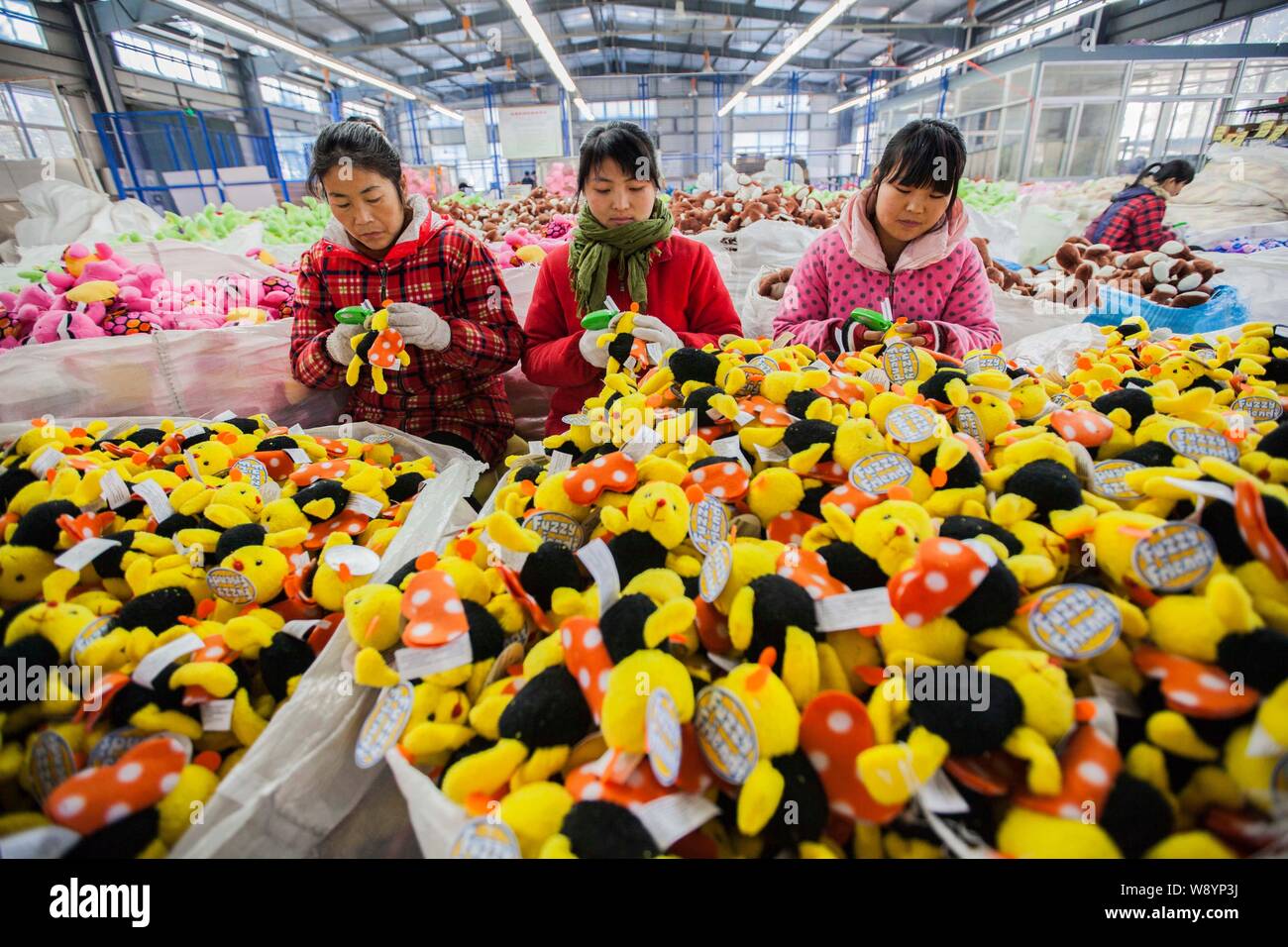Female Chinese workers sew stuffed toys to be exported to Europe and the United States at a garment factory in Ganyu Economic Development Area in Lian

Image details
Contributor:
Imaginechina Limited / Alamy Stock PhotoImage ID:
W8YP3JFile size:
60.2 MB (1.8 MB Compressed download)Releases:
Model - no | Property - noDo I need a release?Dimensions:
5616 x 3744 px | 47.5 x 31.7 cm | 18.7 x 12.5 inches | 300dpiDate taken:
8 December 2014Photographer:
ImaginechinaMore information:
Female Chinese workers sew stuffed toys to be exported to Europe and the United States at a garment factory in Ganyu Economic Development Area in Lianyungang city, east China's Jiangsu province, 8 December 2014. China's imports shrank unexpectedly in November while export growth slowed, fuelling concerns that the world's second-largest economy could be facing a sharper slowdown and adding pressure on policymakers to ramp up stimulus measures. Exports rose 4.7 percent from a year earlier, while imports dropped 6.7 percent, the biggest drop since March, data released by the General Administration of Customs showed on Monday (8 December 2014). That left the country with a record trade surplus of $54.5 billion, which analysts say could increase upward pressure on the yuan even as exporters are struggling. Economists polled by Reuters had expected exports to grow 8.2 percent, a 3.9 percent rise in imports and a trade surplus of $43.5 billion, all slowing from October. "Despite another record surplus, the details paint a grim picture with slower export growth and a contraction in commodity imports in volume terms, " said Andy Ji, senior currency strategist at Commonwealth Bank of Australia in Singapore. Exports have been the lone bright spot for China's economy in the last few months, perhaps helping to offset soft domestic demand, but there are doubts about the accuracy of the official numbers amid signs of a resurgence of speculative currency flows through inflated trade receipts.